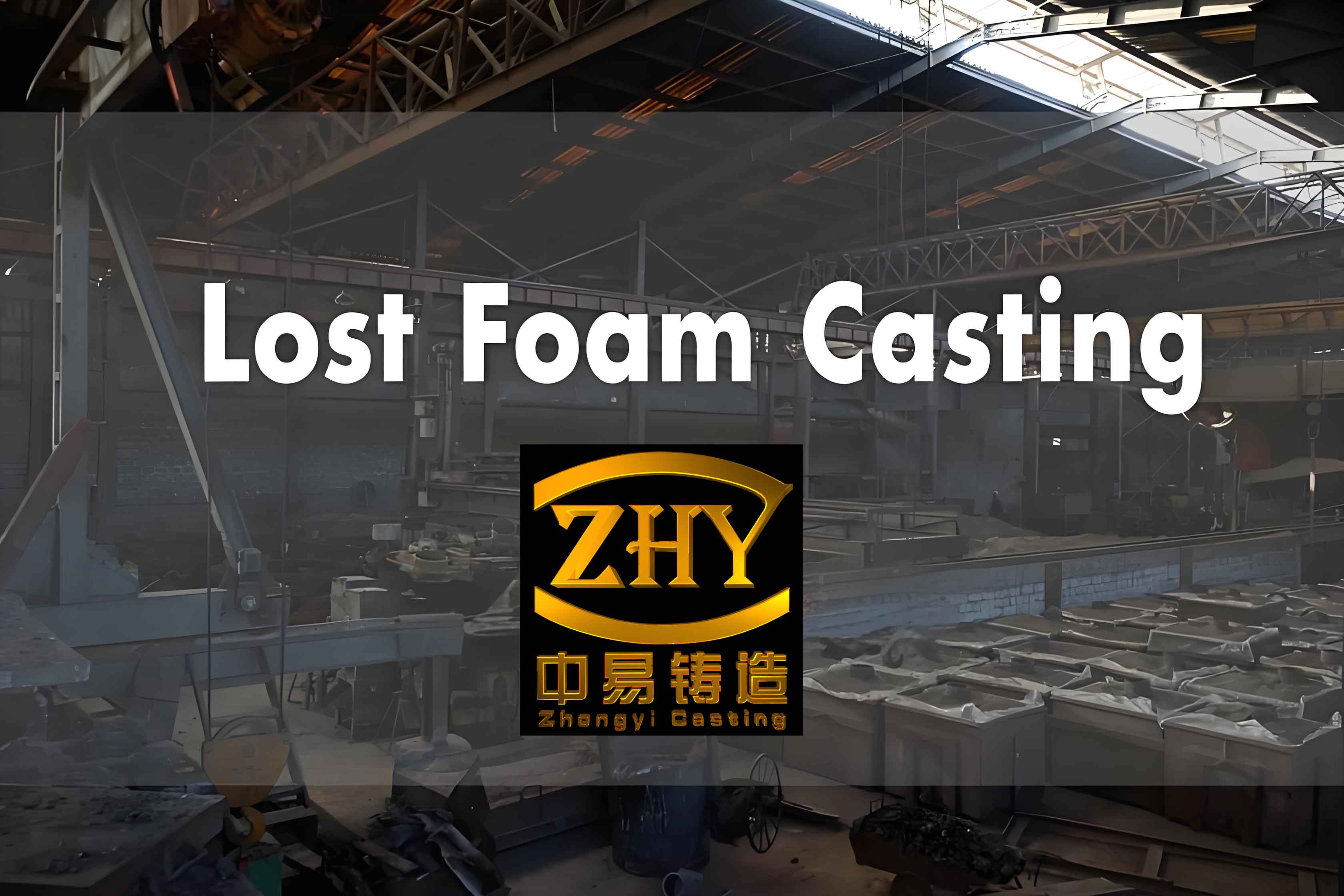1. Introduction
As a senior engineer specializing in casting production and management, I have encountered numerous challenges in manufacturing semi-closed castings using the lost foam casting process. Semi-closed castings, characterized by thin-walled structures and complex internal cavities (Figure 1), are critical components in machinery for load-bearing and containment. Traditional sand casting methods often involve high costs and complex core-making processes, making lost foam casting a superior alternative due to its precision, reduced labor intensity, and suitability for small-batch production.

However, defects such as collapse, shrinkage, and deformation frequently plague semi-closed castings. This article details my team’s systematic investigation into optimizing the lost foam casting process to address these issues, focusing on negative pressure control, mold design, and process parameter adjustments.
2. Literature Review
Lost foam casting has been widely adopted in automotive, aerospace, and alloy industries due to its ability to produce intricate geometries with minimal post-processing. Previous studies highlight the importance of foam density, coating properties, and vacuum stability in defect prevention (Chen et al., 2022; Liu, 2019). For semi-closed castings, maintaining uniform negative pressure across internal and external cavities remains a critical challenge, as uneven pressure distribution leads to deformation and sand erosion (Yuan et al., 2003; Long et al., 2018). Our work builds on these foundations by introducing innovative solutions like tilted molding and external negative pressure tubes.
3. Methodology
3.1 Process Design
The lost foam casting workflow comprises four stages:
- Foam Model Preparation: Cutting and assembling EPS (expanded polystyrene) patterns with precision.
- Coating Application: Applying water-based coatings to ensure surface smoothness and gas permeability.
- Sand Filling and Compaction: Vibratory compaction of dry sand around the foam model.
- Pouring and Solidification: Molten metal replaces the vaporized foam under controlled vacuum.
Key parameters are summarized in Table 1.
Table 1: Critical Process Parameters in Lost Foam Casting
| Parameter | Value/Range |
|---|---|
| Foam Density | 10 kg/m³ |
| Coating Drying Temp | 35–50°C (multi-stage) |
| Vibration Frequency | 40–50 Hz |
| Pouring Temperature | 1,550–1,600°C |
| Vacuum Pressure | 0.04–0.06 MPa |
3.2 Defect Analysis and Countermeasures
Initial trials revealed a mere 40% qualification rate due to collapse and deformation. Root cause analysis identified:
- Insufficient Internal Vacuum: Leading to pressure imbalances during metal-foam replacement.
- Poor Sand Compaction: Resulting in uneven support for the foam model.
To address these, we implemented:
- Tilted Molding at 45°: Enhanced sand flow and compaction in semi-closed cavities (Figure 3).
- External Negative Pressure Tubes: Installed inside cavities to equalize vacuum distribution (Figure 7).
4. Results and Discussion
4.1 Impact of Tilted Molding
Trials with varying tilt angles (21°, 30°, 45°, 60°) demonstrated that 45° optimized sand flow and minimized defects (Table 2).
Table 2: Defect Rates vs. Tilt Angles
| Tilt Angle | Sand Flow Uniformity | Defect Rate |
|---|---|---|
| 21° | Poor | 35% |
| 30° | Moderate | 25% |
| 45° | Excellent | 4% |
| 60° | Poor | 30% |
4.2 External Negative Pressure Tubes
By integrating perforated tubes (Figure 6) into cavities, we achieved balanced vacuum levels. Post-implementation data showed:
- Collapse Defects: Reduced from 22% to 6%.
- Qualification Rate: Increased from 40% to 90%.
Table 3: Performance Comparison Before/After Improvements
| Metric | Pre-Improvement | Post-Improvement |
|---|---|---|
| Qualification Rate | 40% | 90% |
| Collapse Defects | 22% | 6% |
| Dimensional Accuracy | ±5 mm | ±1.5 mm |
5. Key Innovations
- Tilted Molding Technique:
- Formula for optimal tilt angle:θ=arctan(hw)θ=arctan(wh)Where hh = cavity height, ww = cavity width.
- Ensures uniform sand distribution and reduces manual intervention.
- External Negative Pressure System:
- Tube specifications:
- Diameter: 150 mm
- Perforation: 2 mm holes at 15×10 mm spacing.
- Balances internal/external pressure, minimizing deformation.
- Tube specifications:
6. Conclusion
Through systematic optimization of the lost foam casting process, we successfully elevated the qualification rate of semi-closed castings from 40% to 90%. Key takeaways include:
- A 45° tilt angle during molding maximizes sand compaction.
- External negative pressure tubes mitigate vacuum imbalances.
Future work will explore automation in sand filling and real-time vacuum monitoring to further enhance efficiency.
